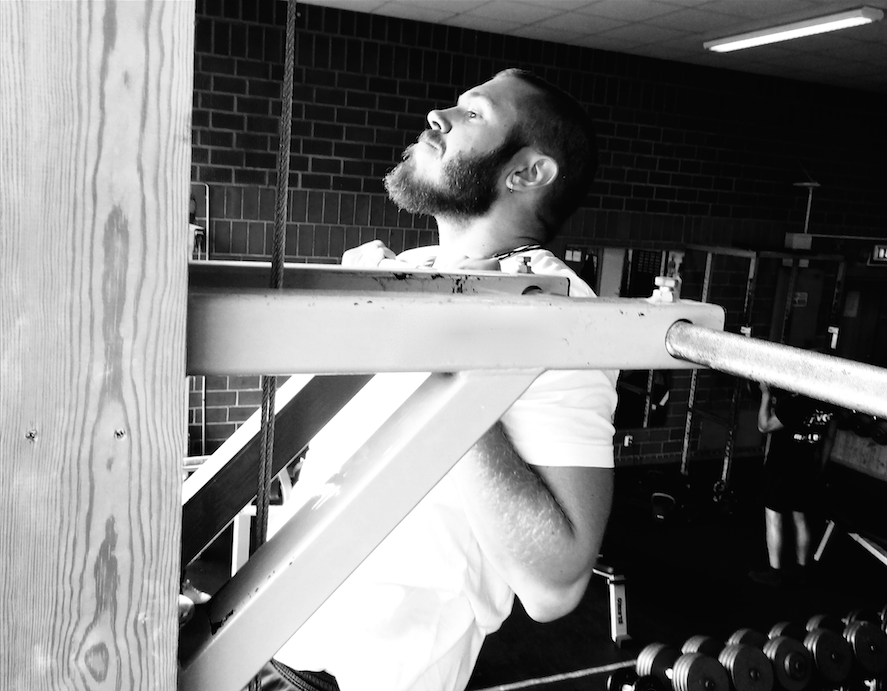Spartan Agoge
Level 6 Valued Member
Hello everyone. I wanted for some time to start a thread with my thoughts on training. Not to teach anyone, but mostly to learn from everyone. So feel free to disagree and put forward your objections, as this is the purpose of this thread. Of course, feel also free to agree, or to ignore.
The first topic I want to discuss is the obsession of the last years: training to absolute failure with low weekly volume. At least in my country, the last years, all the fitness influencers and all the fitness youtubers preach this training style as the absolute truth and the Holy Grail of fitness. If you don't train to absolute failure, you are wasting your time. If you do more than 8 sets per muscle group per week, you are overtraining and you are gonna die a horrific death
Yesterday, I saw a young youtuber, with not really much muscle(skinny but ripped I would call him), doing 1 set of overhead press on smith machine, to absolute failure and then some forced reps with the help of his friends. And, as he said, that was it. Just this 1 set for shoulders for this week.
Is this training style nonsense? In my opinion, yes, absolutely nonsense. I have some people I know telling me that when they reduced the weekly volume and reached failure with every set they saw better results, but this was never the case for me.
When I tried to train to absolute failure, even with low volume, I always ended up with symptoms of overtraining and too much fatigue. I also didn't have any progress at all. If anything, I lost some strength and became unmotivated to train.
On the contrary, when I follow Pavel's recommendation of 1/3 - 2/3 of max reps in every set, it always works great. I increased my muscle mass by doing many sets of 3 reps with my 6rm. For me it is fixed: sets of 6 with 70% 1rm, sets of 5 with 75%, sets of 4 with 80%. If I want to increase the volume I do more sets. All reps are smooth and (somewhat) explosive. No grinding, no screaming, no failing. And it works for me. I think the Soviets produced some amazing athletes by training like this.
So, what is all this hype with training to absolute failure until you puke, or until your head explodes? Is it just some nonsense of young fitness influencers who worship Mentzer as their god, or it actually works for some people? Or it actually works for everyone and I just did it wrong?
The first topic I want to discuss is the obsession of the last years: training to absolute failure with low weekly volume. At least in my country, the last years, all the fitness influencers and all the fitness youtubers preach this training style as the absolute truth and the Holy Grail of fitness. If you don't train to absolute failure, you are wasting your time. If you do more than 8 sets per muscle group per week, you are overtraining and you are gonna die a horrific death

Yesterday, I saw a young youtuber, with not really much muscle(skinny but ripped I would call him), doing 1 set of overhead press on smith machine, to absolute failure and then some forced reps with the help of his friends. And, as he said, that was it. Just this 1 set for shoulders for this week.
Is this training style nonsense? In my opinion, yes, absolutely nonsense. I have some people I know telling me that when they reduced the weekly volume and reached failure with every set they saw better results, but this was never the case for me.
When I tried to train to absolute failure, even with low volume, I always ended up with symptoms of overtraining and too much fatigue. I also didn't have any progress at all. If anything, I lost some strength and became unmotivated to train.
On the contrary, when I follow Pavel's recommendation of 1/3 - 2/3 of max reps in every set, it always works great. I increased my muscle mass by doing many sets of 3 reps with my 6rm. For me it is fixed: sets of 6 with 70% 1rm, sets of 5 with 75%, sets of 4 with 80%. If I want to increase the volume I do more sets. All reps are smooth and (somewhat) explosive. No grinding, no screaming, no failing. And it works for me. I think the Soviets produced some amazing athletes by training like this.
So, what is all this hype with training to absolute failure until you puke, or until your head explodes? Is it just some nonsense of young fitness influencers who worship Mentzer as their god, or it actually works for some people? Or it actually works for everyone and I just did it wrong?

